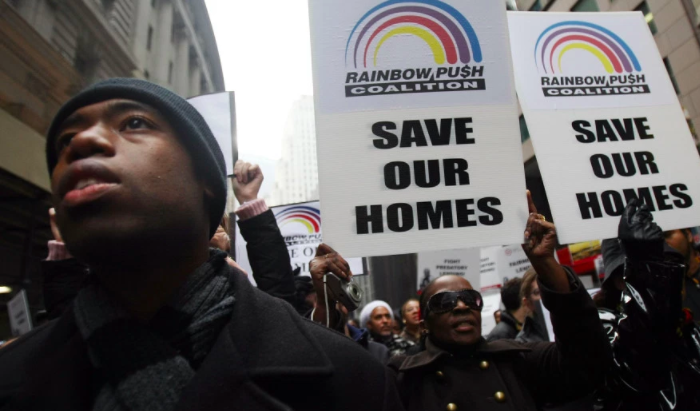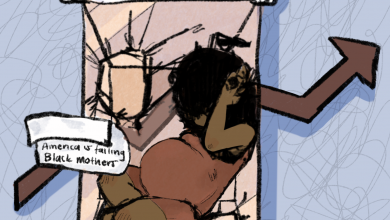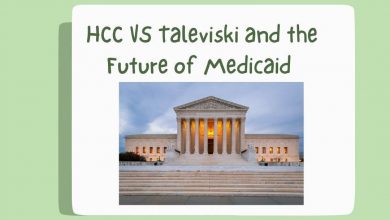Housing Bubbles: What we can learn from 2008

Photo by Mario Tama via Getty Images
Many argued in past months that our economy is experiencing growth of another housing bubble. In economics, a bubble is a phenomenon in which an asset experiences a surge in its price well above the asset’s value. A housing bubble occurs when the value of houses as assets in financial contracts is higher than their fundamental values. When the economy is doing well and unemployment rates are low, banks may be tempted to take riskier assets as collateral so people with low credit can be granted loans and afford expensive housing. This accessibility to more expensive housing can inspire a demand in housing, and thus inflating the value of housing. Because more people are buying homes during these housing bubbles, bankers and third parties might anticipate larger returns when they invest in loans or mortgage backed securities. While this is done often, under certain circumstances can riskier assets and higher investing turn to hurt America, especially its minorities who are already disadvantaged in the housing market.
It may prove difficult to dive into analysis regarding the likelihood of another housing bubble. There has not been much time to look over housing prices and call out their values. Some like James Stack, 66, who manages $1.3 billion for individuals with high net worths and who predicted the housing crash in 2005, sees homebuilder and mortgage company stocks, jumping 80 percent in the past year as a warning sign. He sees housing markets being overvalued and draws a stringent parallel to the lead up of the 2005 housing market crash. However realtors like Annie Cion Gruenberger, a broker with Warburg Realty for 28 years, contest that housing prices now are not significantly overpriced and that home buyers are more vigilant in their housing endeavors since 2008. She adds that the lack of foreign investment in housing also plays a role in discouraging demand and overall investment in housing thus dropping the prices of housing.
A housing bubble that we might more accurately be able to dig into is found in the popularized Wolf Of Wall Street-esque years of 2007-2008. A bubble might burst when people start to see the possibility of not getting higher returns on an overvalued asset. In the case of 2008, economists started to find banks and credit rating agencies advising banks to give out loans to people who would realistically not be able to pay them back. Entire countries, like Iceland, were advised to invest in thousands of Mortgage Backed Securities (MBS’s), a relatively new concept at the time. These MBS’s and other subprime mortgages were given extremely safe A or even AAA ratings for investment, while the true ratings were nowhere near the given ratings.
Some contest that the risky and false advice credit rating agencies provided to many banks should have been subject to government oversight, calling this the move that crashed the market. Others, however, champion the view that banks were simply listening to the credit rating agencies that had outstanding and accurate histories rating bonds and stocks.
In addition, the market incentives for loan originators, securitizers, and even credit rating agencies encouraged a reliance on the green light the credit rating agencies gave to these fairly new and complex bonds. This view suggests that the banks and a great deal of those involved in the crash were not acting completely out of greed or malice, but simply counting on the agencies they had relied on for decades.Whether politicians-or even the banks– encouraged huge banks to sell these subprime mortgages and make even the most financially unqualified candidates able to take out loans, is unclear and highly contentious. However what is clear is the fact that these ratings were stretches that were eventually called out, and when the music stopped, a wave of investors and individuals pulled money out of the housing market.
The consequences of these decisions placed thousands of American homeowners and homebuyers in debt or without a house. Once investors realized that these homeowners were unlikely to pay back their loans, banks took huge hits, with many of them–like Lehman Brothers and Bear Stearns–filing for bankruptcy. Whether we blame the people who accepted allegedly safe loans, the banks who trusted the agencies they coordinated with long term, or various ignorant decision making and misunderstanding on multiple levels of authority, in the end, several banks were refinanced by the Federal Reserve, and thousands of Americans lost their homes.
Although the recession increased the average rent check by 22% in the 50 largest housing markets , older millennials, minorities, especially Latinx folks, and men were most likely to be displaced from homeowners to renters in 2008. African Americans and Latinxs were disproportionately affected. A report from the ACLU reported that Black Americans’ wealth is estimated to be 40% lower and $98,000 poorer, than if the recession had not happened. A white American’s wealth is predicted to be 30% lower than it would have been if the recession had not happened.
Because home ownership makes up a larger portion of the average Black person’s overall wealth, the statistics showed that the recession hit this community harder. These numbers are also indicative of minority communities being disproportionately harmed by, and given these subprime home loans with high interest mortgages, given by banks, on houses they were living in. These mortgages eventually blew up into unaffordable payments for minority and non-minority homeowners who eventually defaulted as the values of homes dropped.
While this affected all communities, the ACLU study displays that the subprime financing disproportionately affected Black communities, even accounting for upper income Black households. Additionally a report from the Department of Treasury found that Black and Latinx households were almost 50% more likely to face foreclosure then white households. This evidence of racial disparities in subprime lending shows Americans the social impact of the 2008 housing bubble burst.
Defenders of the Federal Reserve’s decision to loan out money to the otherwise bankrupt banks, who had offered what came to be unaffordable loans for the majority, argue this move was crucial to save the American economy for decades to come. In a Brookings talk in 2014, former Federal reserve chair Ben Bernanke said if the Federal Reserve had not provided banks with emergency funds the market would have fallen into an even deeper recession than it had already experienced. On the other hand, many believe the Federal government’s decision to “bail out” the banks was immoral, as thousands were left without homes and needed to file for bankruptcy. In particular, Black and Latinx communities were hit harder by the recession than their white counterparts. Around 2008, home equity for white Americans decreased by roughly 9 percent while Black Americans experienced a decrease of 12 percent. Those who condemned saw the nearly zero percent interest rates for banks taking out emergency loans from the Fed actually incentivised the banks’ risky behavior of loaning to under qualified persons.
At this point in time we cannot be sure whether we are in the midst of a housing bubble. However, it is worth revisiting the last bubble that burst in the American economy to better understand the possible ramifications of who is affected and how they are affected in our next economic downfall.




